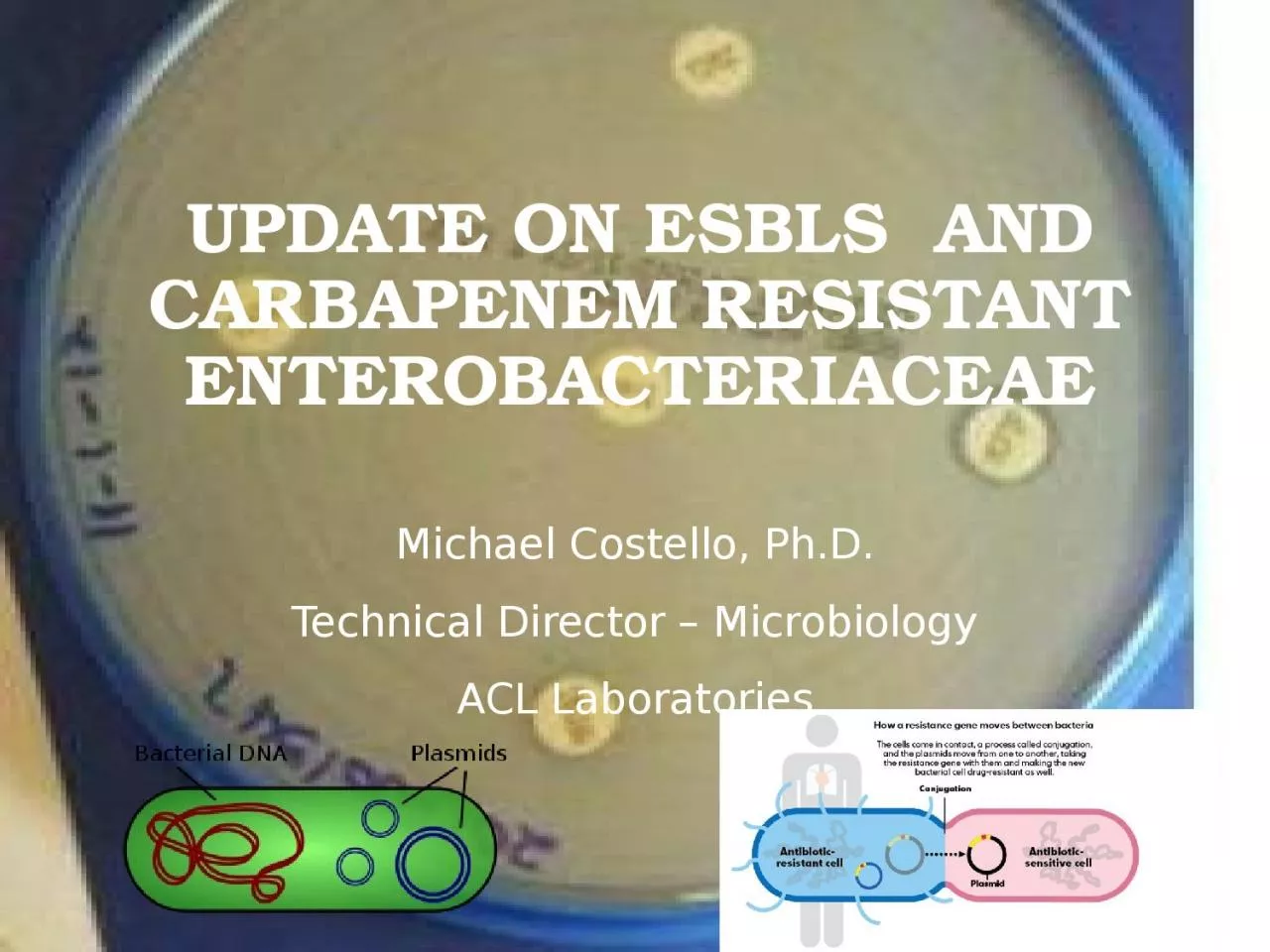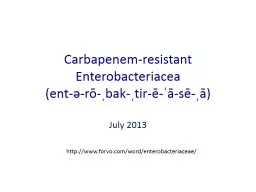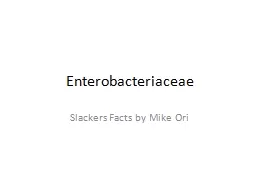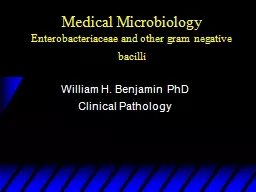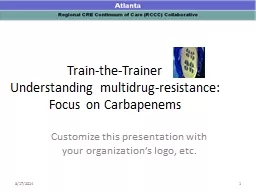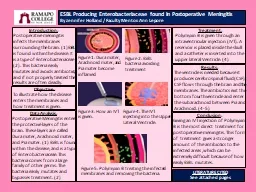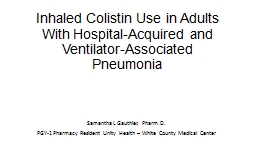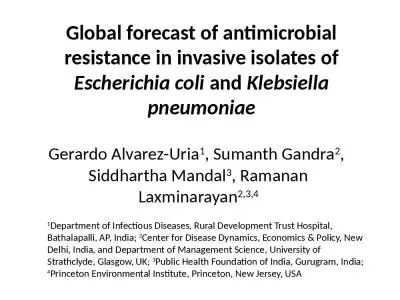PPT-Update on ESBLS and Carbapenem Resistant Enterobacteriaceae
Author : ivy | Published Date : 2024-01-29
Michael Costello PhD Technical Director Microbiology ACL Laboratories Topics To Cover Extended spectrum β lactamases ESBLs Update on the recent changing patterns
Presentation Embed Code
Download Presentation
Download Presentation The PPT/PDF document "Update on ESBLS and Carbapenem Resistan..." is the property of its rightful owner. Permission is granted to download and print the materials on this website for personal, non-commercial use only, and to display it on your personal computer provided you do not modify the materials and that you retain all copyright notices contained in the materials. By downloading content from our website, you accept the terms of this agreement.
Update on ESBLS and Carbapenem Resistant Enterobacteriaceae: Transcript
Download Rules Of Document
"Update on ESBLS and Carbapenem Resistant Enterobacteriaceae"The content belongs to its owner. You may download and print it for personal use, without modification, and keep all copyright notices. By downloading, you agree to these terms.
Related Documents

